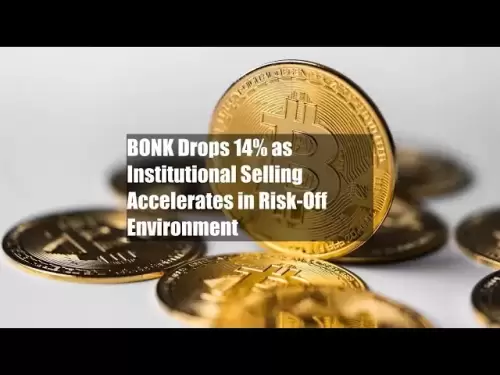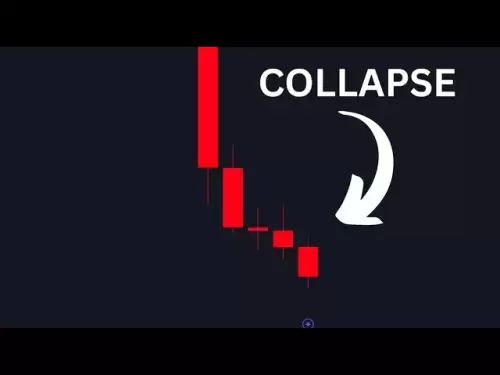-
 Bitcoin
Bitcoin $113900
-1.39% -
 Ethereum
Ethereum $3517
-4.15% -
 XRP
XRP $3.009
1.59% -
 Tether USDt
Tether USDt $0.9997
-0.04% -
 BNB
BNB $766.8
-1.41% -
 Solana
Solana $164.6
-2.38% -
 USDC
USDC $0.9998
-0.02% -
 TRON
TRON $0.3277
0.65% -
 Dogecoin
Dogecoin $0.2023
-1.67% -
 Cardano
Cardano $0.7246
0.05% -
 Hyperliquid
Hyperliquid $38.27
-4.77% -
 Sui
Sui $3.528
-0.52% -
 Stellar
Stellar $0.3890
-0.73% -
 Chainlink
Chainlink $16.16
-2.69% -
 Bitcoin Cash
Bitcoin Cash $539.9
-4.38% -
 Hedera
Hedera $0.2425
-2.00% -
 Avalanche
Avalanche $21.71
-0.97% -
 Toncoin
Toncoin $3.662
5.73% -
 Ethena USDe
Ethena USDe $1.000
-0.02% -
 UNUS SED LEO
UNUS SED LEO $8.964
0.35% -
 Litecoin
Litecoin $107.7
2.33% -
 Shiba Inu
Shiba Inu $0.00001223
-0.40% -
 Polkadot
Polkadot $3.617
-0.97% -
 Uniswap
Uniswap $9.052
-2.49% -
 Monero
Monero $295.1
-3.79% -
 Dai
Dai $0.9999
0.00% -
 Bitget Token
Bitget Token $4.315
-1.85% -
 Pepe
Pepe $0.00001060
0.11% -
 Cronos
Cronos $0.1342
-2.72% -
 Aave
Aave $256.0
-0.87%
What is the liquidity provision time for Bitcoin ETF?
Liquidity provision time for Bitcoin ETFs varies based on trading volume, market maker activity, market sentiment, and order size, impacting execution speed.
Mar 29, 2025 at 04:35 pm
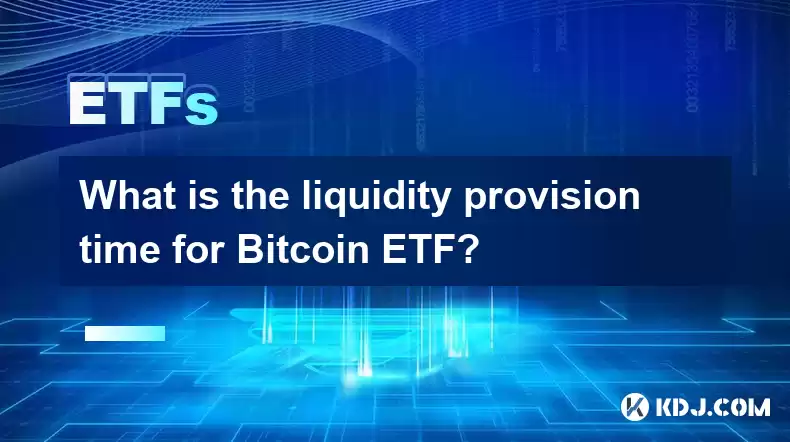
Understanding Liquidity in Bitcoin ETFs
The question of liquidity provision time for a Bitcoin ETF is complex and doesn't have a single, simple answer. It depends on several factors, including the ETF's structure, the market conditions, and the trading volume. Unlike directly trading Bitcoin on an exchange, a Bitcoin ETF involves buying and selling shares representing a basket of Bitcoin held by the ETF provider. Therefore, the liquidity of the ETF is tied to the ease with which these shares can be bought and sold.
Factors Affecting Liquidity Provision Time
The speed at which you can buy or sell Bitcoin ETF shares is influenced by several key factors. Firstly, the trading volume of the ETF itself plays a crucial role. High trading volume generally means tighter spreads and faster execution, implying quicker liquidity provision. Conversely, low trading volume can lead to wider spreads and slower execution, impacting the speed of your trades.
Secondly, the market maker's activity is critical. Market makers provide liquidity by quoting both bid and ask prices, facilitating trading. Their involvement ensures a smoother trading experience, and their capacity to absorb large orders directly impacts liquidity provision time. A highly active and well-capitalized market maker can provide near-instant liquidity.
Thirdly, the overall market sentiment toward Bitcoin and the ETF itself is a significant factor. During periods of high volatility or uncertainty, liquidity can dry up, leading to longer execution times. Conversely, periods of calm and positive sentiment often result in improved liquidity.
Finally, the size of your order also matters. Large orders can be more challenging to fill quickly, especially in less liquid markets. Smaller orders tend to execute faster as they are easier to absorb within the existing liquidity pool. This is true for both buying and selling.
The Role of the Authorized Participant (AP)
Authorized Participants (APs) are crucial in maintaining the liquidity of Bitcoin ETFs. They are large institutional investors who create and redeem ETF shares. Their actions directly impact the supply and demand of ETF shares, thus influencing liquidity. They often arbitrage the price difference between the ETF shares and the underlying Bitcoin to maintain the ETF's net asset value (NAV) close to its market price. Their ability to efficiently create and redeem shares is paramount to fast liquidity provision.
Step-by-Step Process of Liquidity Provision
While there isn't a fixed "time" for liquidity provision, here's a breakdown of the steps involved:
- Order Placement: You place an order to buy or sell Bitcoin ETF shares through your broker.
- Order Routing: The order is routed to the exchange where the ETF is listed.
- Matching Engine: The exchange's matching engine attempts to match your order with a counterparty.
- Execution: If a match is found, the order is executed, and the trade is confirmed.
- Settlement: The settlement process involves transferring the shares (or cash) to your brokerage account. This typically takes a few business days.
The time taken for each step, especially matching and execution, depends on the factors discussed earlier – trading volume, market maker activity, market sentiment, and order size.
The Impact of Regulatory Uncertainty
Regulatory uncertainty surrounding Bitcoin ETFs can also affect liquidity. If regulatory approvals are delayed or uncertain, investors may be hesitant to invest, leading to lower trading volume and potentially less liquidity. Conversely, clear and supportive regulations can boost investor confidence, increasing trading volume and improving liquidity.
Comparing ETF Liquidity to Spot Market Liquidity
It's important to compare the liquidity of a Bitcoin ETF to the liquidity of the spot Bitcoin market. The spot market, where Bitcoin is traded directly, generally offers higher liquidity due to its larger trading volume and more participants. However, Bitcoin ETFs provide several advantages, such as regulatory oversight and easier access for many investors. The liquidity trade-off is a key consideration for investors.
Understanding Market Depth
Market depth refers to the number of buy and sell orders at various price levels. A deeper market typically indicates greater liquidity, as there are more orders available to fill your trade quickly. A shallow market, on the other hand, may result in slower execution times and wider spreads. Checking the order book before placing an order can provide insights into market depth and potential liquidity.
The Importance of Broker Selection
Your choice of broker can also influence the speed of liquidity provision. Brokers with direct access to market makers and efficient order routing systems can provide faster execution times. It's crucial to choose a reputable broker with a strong track record and robust infrastructure.
Frequently Asked Questions
Q: How long does it typically take to buy or sell Bitcoin ETF shares?
A: The time it takes can vary significantly, ranging from near-instantaneous for small orders in highly liquid markets to several minutes or even longer for large orders in less liquid markets. Factors like market conditions and order size play a significant role.
Q: Is a Bitcoin ETF as liquid as trading Bitcoin directly on an exchange?
A: Generally, no. The spot Bitcoin market tends to offer higher liquidity due to its larger size and more participants. However, Bitcoin ETFs provide benefits like regulatory oversight and easier access for many investors.
Q: What happens if I try to sell a large amount of Bitcoin ETF shares during a period of low liquidity?
A: You may experience slower execution times, wider spreads, and potentially a less favorable price compared to selling during periods of high liquidity. You might also only be able to sell a portion of your shares immediately.
Q: How can I assess the liquidity of a Bitcoin ETF before investing?
A: Check the ETF's trading volume, bid-ask spread, and market depth. Look for ETFs with high trading volume and tight spreads, indicating greater liquidity. You can also review the ETF's fact sheet or prospectus for information on liquidity.
Q: What role do Authorized Participants (APs) play in ensuring liquidity?
A: APs are crucial in maintaining the liquidity of Bitcoin ETFs by creating and redeeming ETF shares, helping to keep the ETF's price close to its net asset value (NAV). Their efficient actions directly impact the supply and demand of ETF shares.
Disclaimer:info@kdj.com
The information provided is not trading advice. kdj.com does not assume any responsibility for any investments made based on the information provided in this article. Cryptocurrencies are highly volatile and it is highly recommended that you invest with caution after thorough research!
If you believe that the content used on this website infringes your copyright, please contact us immediately (info@kdj.com) and we will delete it promptly.
- Crypto Donations, Trump PAC, and Bitcoin: A New York Minute on Political Coin
- 2025-08-02 20:30:12
- Crypto Market Under Pressure: Bearish Momentum and Rising Volatility Take Hold
- 2025-08-02 20:30:12
- DeFi Token Summer Gains: Is Mutuum Finance the Real Deal?
- 2025-08-02 18:30:12
- Bitcoin, Realized Price, and the Top: Are We There Yet?
- 2025-08-02 18:30:12
- Dogwifhat (WIF) Rally: Will the Meme Coin Bite Back?
- 2025-08-02 19:10:12
- PayFi Heats Up: Tron's AMA Recap & TRX's Bullish Nasdaq Debut
- 2025-08-02 19:10:12
Related knowledge
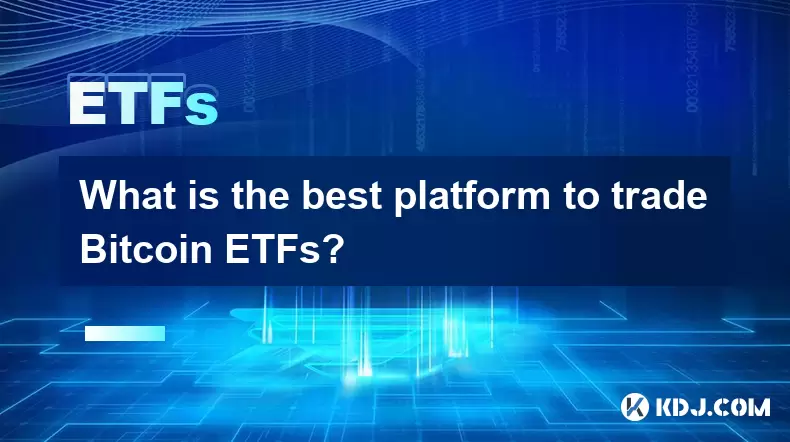
What is the best platform to trade Bitcoin ETFs?
Jul 23,2025 at 04:14am
Understanding Bitcoin ETFs and Their Role in TradingBitcoin Exchange-Traded Funds (ETFs) have gained significant traction among traditional and crypto...
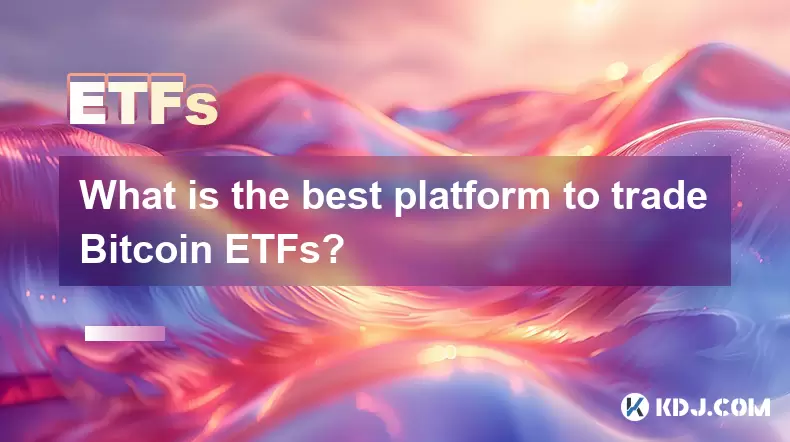
What is the best platform to trade Bitcoin ETFs?
Jul 17,2025 at 03:50pm
Understanding Bitcoin ETFs and Their Role in the MarketBitcoin Exchange-Traded Funds (ETFs) are investment vehicles that track the price of Bitcoin wi...

Will a Bitcoin ETF be available in my 401(k)?
Jul 17,2025 at 10:42pm
What is a Bitcoin ETF?A Bitcoin ETF (Exchange-Traded Fund) is an investment vehicle that tracks the price of Bitcoin without requiring investors to di...
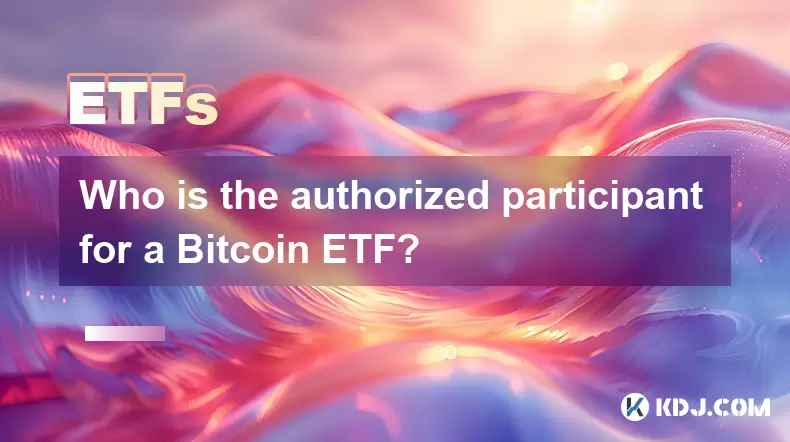
Who is the authorized participant for a Bitcoin ETF?
Jul 18,2025 at 12:42am
Understanding the Role of Authorized Participants in Bitcoin ETFsIn the context of Bitcoin Exchange-Traded Funds (ETFs), an authorized participant (AP...
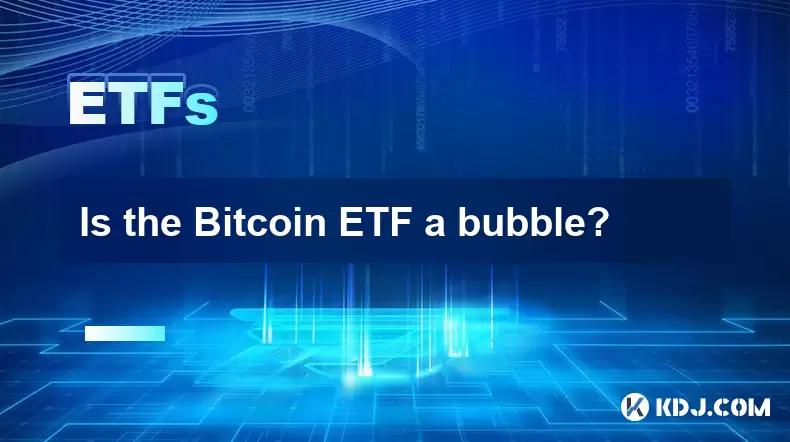
Is the Bitcoin ETF a bubble?
Jul 20,2025 at 06:57am
Understanding the Bitcoin ETF ConceptA Bitcoin Exchange-Traded Fund (ETF) is a financial product that aims to track the price of Bitcoin without requi...
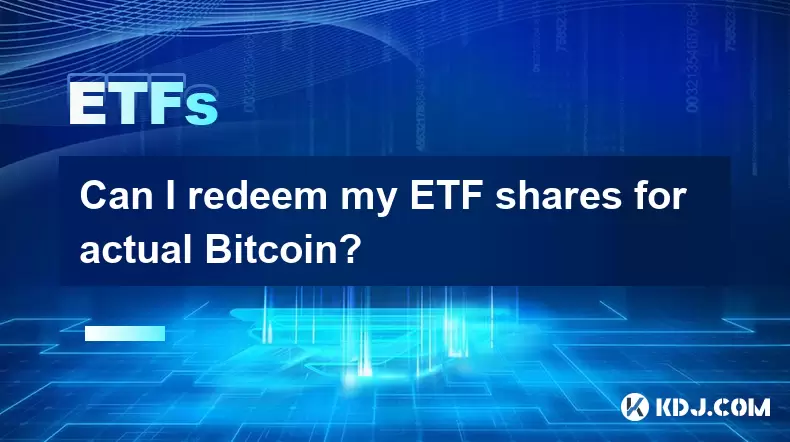
Can I redeem my ETF shares for actual Bitcoin?
Jul 17,2025 at 03:14pm
Understanding ETF Shares and Their Relation to BitcoinExchange-Traded Funds (ETFs) have become a popular investment vehicle for those looking to gain ...

What is the best platform to trade Bitcoin ETFs?
Jul 23,2025 at 04:14am
Understanding Bitcoin ETFs and Their Role in TradingBitcoin Exchange-Traded Funds (ETFs) have gained significant traction among traditional and crypto...

What is the best platform to trade Bitcoin ETFs?
Jul 17,2025 at 03:50pm
Understanding Bitcoin ETFs and Their Role in the MarketBitcoin Exchange-Traded Funds (ETFs) are investment vehicles that track the price of Bitcoin wi...

Will a Bitcoin ETF be available in my 401(k)?
Jul 17,2025 at 10:42pm
What is a Bitcoin ETF?A Bitcoin ETF (Exchange-Traded Fund) is an investment vehicle that tracks the price of Bitcoin without requiring investors to di...

Who is the authorized participant for a Bitcoin ETF?
Jul 18,2025 at 12:42am
Understanding the Role of Authorized Participants in Bitcoin ETFsIn the context of Bitcoin Exchange-Traded Funds (ETFs), an authorized participant (AP...

Is the Bitcoin ETF a bubble?
Jul 20,2025 at 06:57am
Understanding the Bitcoin ETF ConceptA Bitcoin Exchange-Traded Fund (ETF) is a financial product that aims to track the price of Bitcoin without requi...

Can I redeem my ETF shares for actual Bitcoin?
Jul 17,2025 at 03:14pm
Understanding ETF Shares and Their Relation to BitcoinExchange-Traded Funds (ETFs) have become a popular investment vehicle for those looking to gain ...
See all articles





















